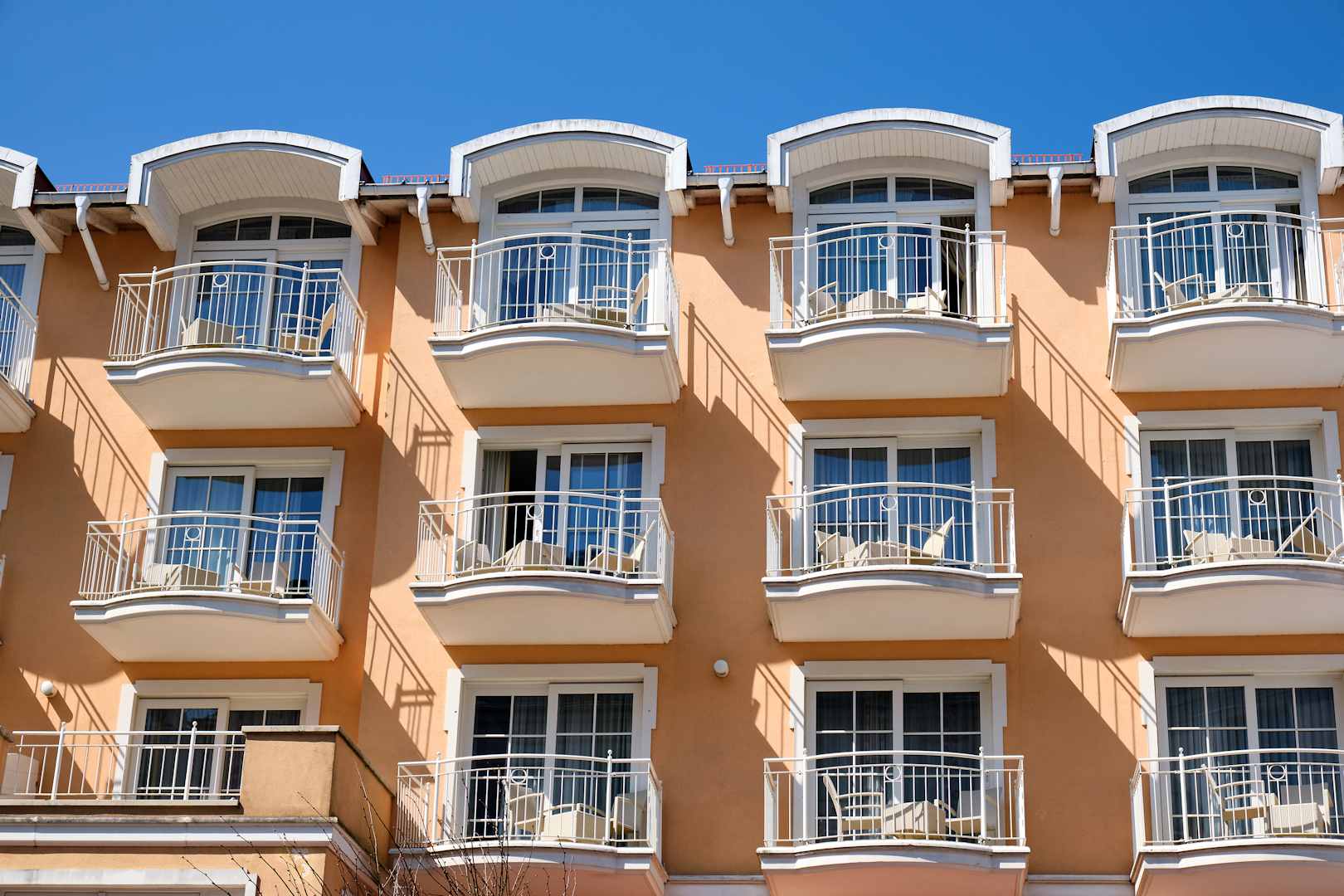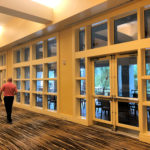In preparation for an upcoming session on this topic, I have updated this Decoded article with current code references. If you’re not familiar with this recent code change, check it out!
This post was published in Door Security + Safety
.

Many buildings include exterior spaces such as balconies, courtyards, and roof terraces, that present conflicts between egress and security. If these areas do not have a dedicated means of egress directly to the public way, the egress route typically leads from the exterior space, through the interior of the building, and out through the building’s exits. Doors that facilitate free egress from a courtyard or terrace into the building often create security problems, if someone is able to access the exterior space and enter the building.
Because past editions of the International Building Code (IBC) did not address these applications specifically, specifiers and suppliers have had two options: a) provide code-compliant means of egress through the building interior (often jeopardizing security), or b) work with the local Authority Having Jurisdiction (AHJ) to find an acceptable compromise.
In the past, code-compliant options were limited. For some occupancy classifications, delayed egress locks could provide some security, although an unauthorized person could enter the building after waiting 15 seconds (or 30 seconds when approved by the AHJ). For assembly occupancies where delayed egress locks are not typically allowed by the IBC, egress doors were limited to exit alarms as a deterrent.
Code modifications approved by the AHJ are often inconsistent. One jurisdiction could allow electrified locksets that unlock upon fire alarm activation, another code official might allow mechanical locksets if the doors are kept unlocked while the area is occupied. Some AHJs may require a two-way communication system to ensure that someone can call for help if they are inadvertently locked in the exterior space. Previously, the model codes did not offer any guidance for this application, so it was left up to each jurisdiction.
A change was incorporated into the 2021 edition of the IBC, and was carried forward into the 2024 edition without modifications. The change proposal was submitted by the Washington Association of Building Officials Technical Code Development Committee. The intent was to address the acceptable means of locking egress doors that serve exterior spaces – the balconies, courtyards, and roof terraces where the paths of egress pass through the interior of the adjacent building. While the original proposal (E53-18) was disapproved by the committee, it was later approved as modified when a maximum occupant load was added by public comment in response to the technical committee’s recommendation.
To summarize the change, when a means of egress from an exterior space passes through the building, the exit access doors may be equipped with “an approved locking device” if the following criteria are met. Note that this section does not apply to egress courts, which are defined as: A court or yard which provides access to a public way for one or more exits.
- The calculated occupant load of the exterior space must be no more than 300 people, and the maximum occupant load for assembly occupancies must be posted on a permanent sign in a conspicuous location near all of the exit access doors. Other code requirements, such as the direction of door swing, required clear width, and mandates for exit signs would also apply to these doors.
- A weatherproof telephone or two-way communication system must be located adjacent to at least one exit access door on the exterior side. A change to the International Fire Code (IFC) requires this system to be inspected and tested annually. The IBC refers to additional requirements for the communication system; it must connect to the fire command center or a central control point approved by the fire department. If this location is not constantly attended, the two-way communication system must have a timed automatic telephone dial-out capability to a monitoring location or 9-1-1. Audible and visible signals are required, and instructions for use of the system to summon assistance must be posted adjacent to the communication device. The location must be identified with a posted sign, and all signage must comply with the ICC A117.1 requirements for visual characters.
- The lock must be key-operated, and readily distinguishable as locked. This requirement is similar to the section addressing key-operated locks that may be installed on the main entrance doors of buildings in some occupancy types. These double-cylinder deadbolts typically have indicators showing whether the lock is locked or unlocked. The code does not specify which side of the door must have the indicator, so the cautious approach would be to provide the indicator on both sides of the door serving an exterior space.
- A modification to the IBC section on panic hardware clarifies that the double-cylinder deadbolt allowed by this section is an acceptable alternative to panic hardware, provided that all of the requirements are met. The key-operated lock would be the only locking/latching hardware on the door, so when the door is unlocked, it would be push/pull function. Note: Some questions have come up about this, so there is a follow-up post here.
- Each exit access door must have a clear vision panel measuring not less than 5 square feet, which allows visibility of occupants using the exterior area. When a door has a vision panel (as required for this application), the accessibility standards require the bottom edge of at least one vision panel to be located not more than 43 inches above the floor. The purpose of this vision panel is to allow someone to see whether there are any occupants in the exterior space before locking the door.
- Signage must be posted on the interior side, on or adjacent to each locked required exit access door serving the exterior space, which states: THIS DOOR TO REMAIN UNLOCKED WHEN THE OUTDOOR AREA IS OCCUPIED. Letters must be at least 1 inch high on a contrasting background. Although this section specifies that it applies to each “required” exit, the IBC’s egress requirements apply to required exits as well as to doors that are provided for egress purposes. It’s likely that doors provided in greater quantities than required would also have to comply with the code requirements if they are intended to be used for egress.

The IBC section on doors serving exterior spaces also addresses locks securing exterior spaces serving dwelling units, sleeping units, and private offices.
The same section in the IBC allows the use of locks on the exterior side of doors for balconies, decks, or exterior spaces serving individual dwelling units or sleeping units, or private office space where the exterior area is 250 square feet or less. For these locations, the two-way communication system, indicator, vision panel, and signage are not required by the IBC.
Remember, these requirements only apply where the jurisdiction has adopted the 2021 or 2024 edition of the IBC. In other locations, the AHJ would have to be consulted for a code modification, unless the state or local code includes criteria that address the means of locking these doors. There may be some jurisdictions where state codes differ from the requirements of the model code. Be sure to check the adopted code to verify the applicable limitations for egress doors serving exterior spaces.
You need to login or register to bookmark/favorite this content.










Leave A Comment